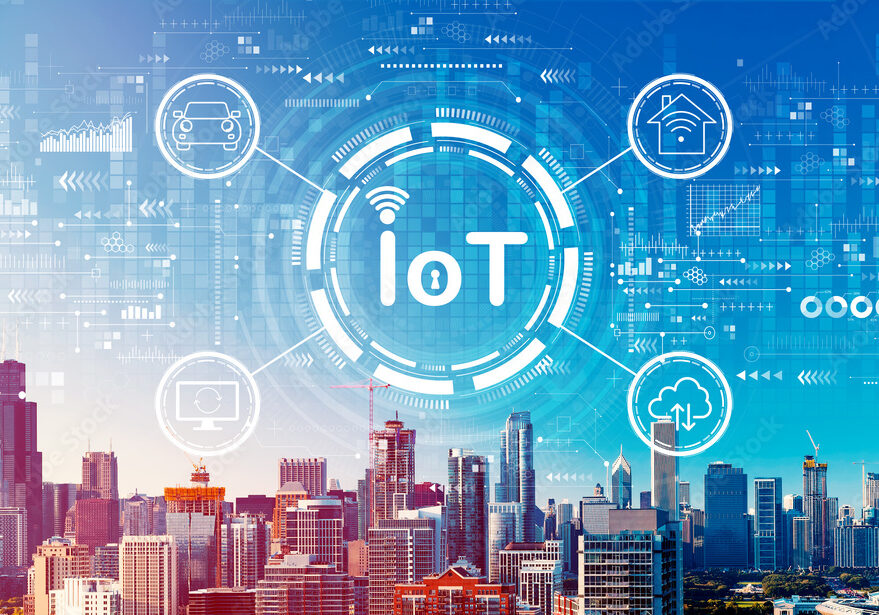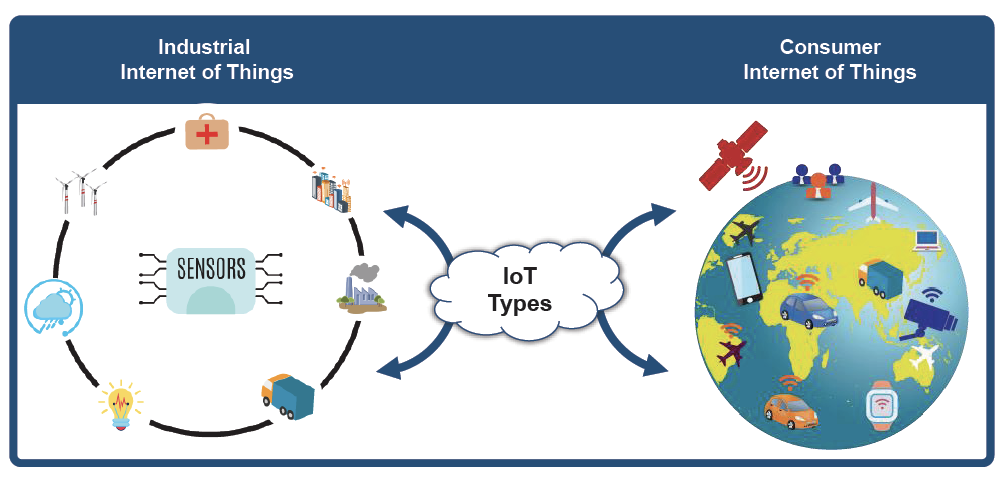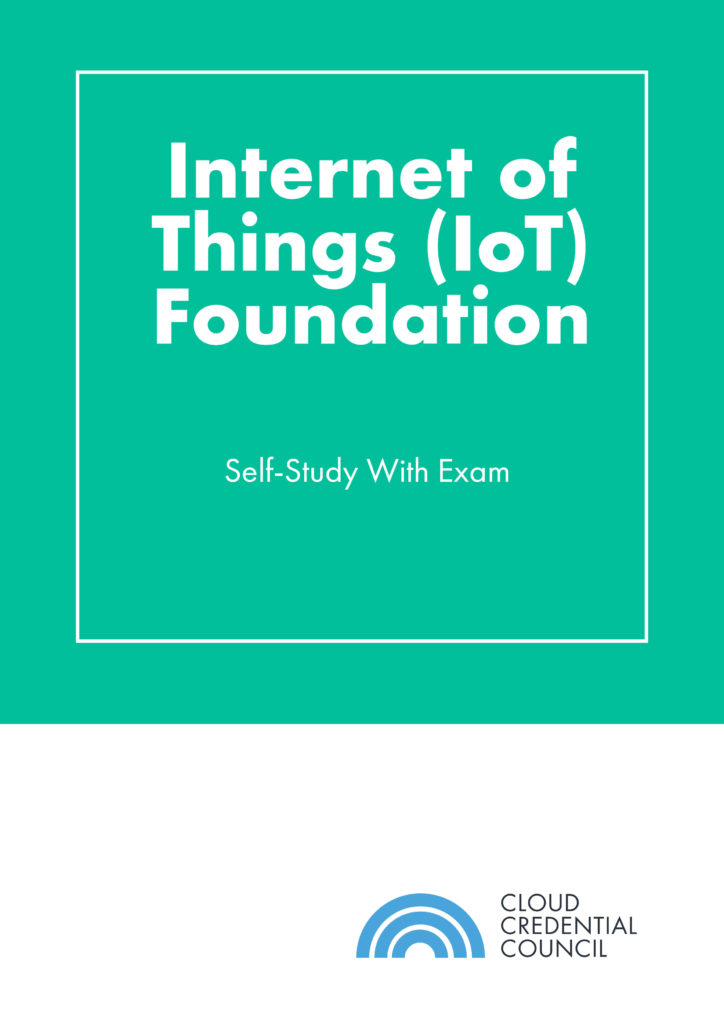Knowledge Byte: The Different Types of IoT
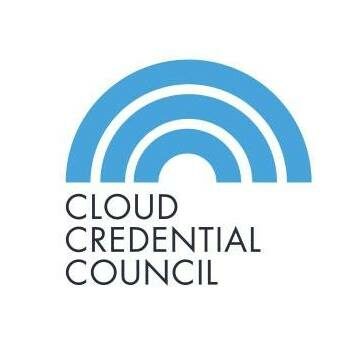
Cloud Credential Council (CCC)

Curious to know what distinguishes the different types of IoT? Keep reading for an overview of Industrial and Consumer IoT.
There are two types of IoT: CIoT and IIoT. The differences between CIoT and IIoT are:
● CIoT often focuses on convenience for individual customers, whereas IIoT is strongly focused on the industry sector, improving the efficiency, security, and output of operations with a focus on Return on Investment (ROI).
● For IIoT, the scope can be within an organization (smart factory) or between organizations (retailer supply chain). This is definitely the most established and mature part of IoT. The IIoT will help a business to achieve:
○ Efficiency
○ Harness intelligence from a wide range of equipment
○ Improve operations (productivity)
○ Increase customer satisfaction
● For CIoT, the scope can be a single individual, family, small group, or community. The CIoT will help make life easier for consumers by improving:
○ Quality
○ Comfort
○ Security
○ Convenience
○ Efficiency
Industrial Internet of Things
Industry + Internet + Things = Industrial Internet of Things (IIoT)
The IIoT represents industry-oriented applications where:
● Devices are gadgets functioning in industrial, transportation, energy, or medical environment.
● Data quantity and rates tend to vary from sustained to relatively high.
● Applications are safety-critical, for example, the misbehaving of a smart traffic system can threaten drivers.
● IIoT applications tend to be system-centric.
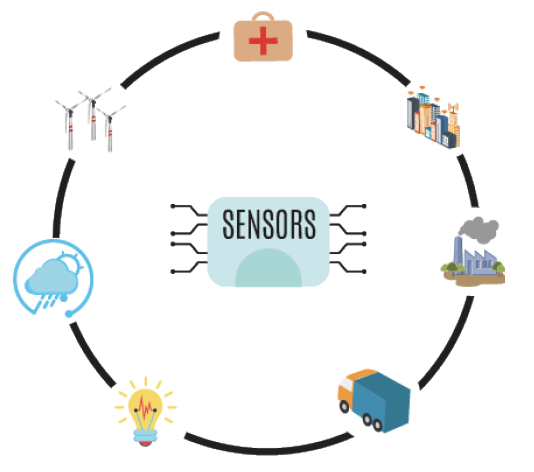
IIoT incorporates machine learning and big data technology by utilizing the sensor data, M2M communication, and automation technologies that have existed in the industrial landscape for a long time. The driving force behind the IIoT is that smart gadgets are better than humans at accurately, consistently capturing, and communicating data.
This data can support organizations to discover inefficiencies and problems sooner, save time and money, and support business intelligence efforts. In the manufacturing sector, IIoT holds promising potential for quality checks, sustainable and environmental-friendly practices, supply chain traceability, and overall supply chain efficiency.
Consumer Internet of Things
Consumer + Internet + Things = Consumer Internet of Things (CIoT)
The CIoT is a category of consumer-oriented applications where:
● Gadgets are consumer devices, for example, mobile, refrigerator, glasses, etc.
● Data quantity and rates are comparatively low.
● Applications are not very critical, for example, failure of fitness gadgets will not harm you.
● CIoT applications are consumer-centric.
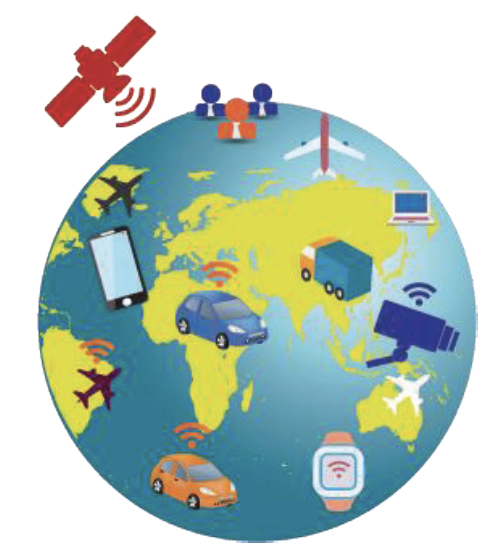
Examples of CIoT include fitness trackers, intelligent home thermostats, Wi-Fi connected cameras, virtual reality headsets, smart fridges and toasters, alarm panels, smart glasses, wearable computing products, etc.
The CIoT technology platform is huge and diverse. In general, CIoT use cases and applications can be categorized into three domains that vary from individual use to large entities, each with an increasing scope:
● Personal IoT: The purview is a single person, such as a smartphone equipped with a Global Positioning System (GPS) sensor or a fitness device that measures the heart rate. This is one of the fastest-growing consumer-oriented areas of IoT.
● Group IoT: The purview is a relatively small group of people, such as a family in a smart house, co-travelers in a vehicle, or a group of tourists. This is one of the most challenging areas and is still in its nascent stage.
● Community IoT: The purview is a huge group of people, potentially thousands and more; usually this is used in the context of public infrastructures, such as smart cities or smart public transport. This is a potentially promising IoT area.
Courses to help you get
results with IoT
Internet Of Things (IoT) Foundation™ 2
The industry-recognized CCC Internet of Things Foundation ensures you are ready to add value to organizations of diverse industries and dimensions. It does so through highly interactive and thought-provoking discussions which focus on: Group exploration and debates Lab exercises which allow learners to experience IoT applications Case study scenarios for IoT End of Module questions
Never miss an interesting article
Get our latest news, tutorials, guides, tips & deals delivered to your inbox.
Keep learning
